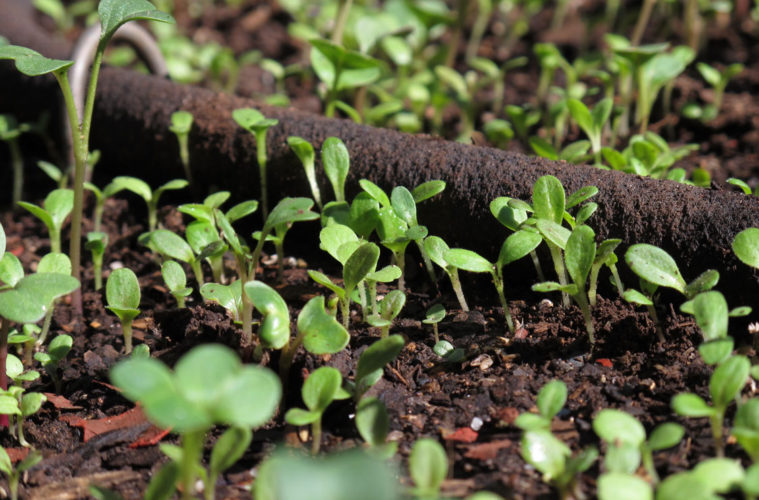Growing veggies from seed is easy, less expensive than buying grown plants and the variety is vast. Follow these guidelines when sowing seeds in situ
Small seeds
Small seeds like lettuce can clump into uneven clusters of seedlings next to bare patches of earth so prepare the soil well.
- Remove all stones, weeds and clods. It’s important to rake the soil smooth – what looks like a little dip to us is a deep valley to a seed and water will flow to the lowest points, taking seeds with it.
- Cover with a smooth layer of seedbed mix (see recipe below right). Press down evenly with a flat piece of wood.
- Mist the surface, wetting the soil without disturbing it.
- Sprinkle small amounts of seeds, alternating north/south with an overlapping east/west pattern, until they’re evenly distributed.
- Cover with a layer of seedbed mix; the seeds should be covered with a layer of earth that’s just double their size.
- Mist gently.
Medium seeds
Medium seeds, such as Swiss chard, need the same soil preparation as for small seeds.
- Make furrows or poke evenly spaced holes in the ground; the depth of each hole should be double the size of the seed.
- Drop the seeds into the holes or evenly space them in the furrows.
- Cover and press the soil down firmly.
Large seeds
Large seeds, such as beans and squash, are the easiest.
- Simply poke a hole in the ground that’s double the size of the seed and drop the seed in.
- Cover and press the soil down firmly.
Jane’s seed sowing secrets
- Keep seeds moist but not waterlogged. Once they germinate, reduce watering to encourage the seedlings to develop strong roots.
- Birds will target newly sown areas. Protect them with netting or upside-down plastic laundry baskets.
- Slugs and snails love munching freshly germinated seedlings. Protect them by sprinkling the seedbeds with shredded artemisia (African wormwood) or tansy leaves and surround them with a barrier of metal pot scourers rolled into long sausages.
- Seed germination rates vary. Sowing two or three seeds per hole will guarantee at least one seedling, but this is a waste when using expensive seed. Rather sow one, and if it doesn’t germinate, fill in the gaps later, resulting in a successive harvest.
- If seeds are sown too thickly, leave them until the seedlings are 7cm high. Then thin them out by snipping them at the base with small scissors. Don’t waste the thinned out seedlings – add them to a salad.

